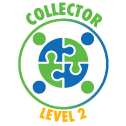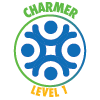STEM Skills Support Continuous Improvement
16 Posts
As a first post in the STEM Network discussions, I would like to introduce the subject of using STEM skills to support continuous improvement efforts. I will define STEM, suggest that the PDSA/PDCA cycle used in education is similar to the one used in industry with similar quality tools, and close asking for your examples of using PDSA in teaching.
Although educators and quality engineers sometimes seem to talk different languages, we use a common language when talking about continuous improvement using PDSA (Plan-Do-Study-Act) or PDCA (Plan-Do-Check-Act). Although the content may be different, we use the language of science and math and even engineering at times to plan for and implement continuous improvement. In doing this, we are using “STEM” skills in our continuous improvement cycle.
STEM stands for Science-Technology-Engineering-Math.
S- Using scientific thinking to test hypotheses and conduct experiments; gather relevant knowledge and facts about a problem
T- Computer technology to present ideas and brainstorm, decrease time to make a decision.
E -Analytical and critical thinking skills to problem solve and get to the root cause and then find an engineering solution, often across several disciplines requiring collaboration.
M -Math, Statistics and Measurement to make data-driven decisions, to understand variation through statistical thinking, to take accurate measurements.
Envision a modern K-12 classroom, where students are engaged with the teacher in learning and use PDSA regularly as one of the classroom processes for learning. Whether in a K-12 classroom or industry, some form of the Fishbone diagram is often used to identify potential sources of a problem. When we talk the language of quality and problem solving in the K-12 classrooms, students develop the critical and analytical thinking (i.e. STEM) skills that are needed in industry. Students learn soft skills such as collaboration, teamwork and communication. These skills are often thought of as STEM skills, skills that are needed as quality engineers and scientists work together on projects.
Also of interest: The Education Division’s latest journal, the Journal of Quality Perspectives on Knowledge Acquisition, has published a special issue on the improvement science, which represents the next generation of using PDSA in education. Click here to go to the Resources page to download the issue. I recommend it for an understanding of the direction improvement science is taking us as the next step in applying continuous improvement to education. This journal issue discusses improving processes for teacher preparation programs. This could lead to higher retention of teachers (too many teachers leave teaching within 5 years) and more students graduating from high school with college-ready skills.
Resources for quality tools are listed in our 2020 STEM Education Resource Directory.
Do you have an example or advice for using the PDSA continuous improvement cycle in teaching either a K12 or college classroom or a certification refresher course?
Although educators and quality engineers sometimes seem to talk different languages, we use a common language when talking about continuous improvement using PDSA (Plan-Do-Study-Act) or PDCA (Plan-Do-Check-Act). Although the content may be different, we use the language of science and math and even engineering at times to plan for and implement continuous improvement. In doing this, we are using “STEM” skills in our continuous improvement cycle.
STEM stands for Science-Technology-Engineering-Math.
S- Using scientific thinking to test hypotheses and conduct experiments; gather relevant knowledge and facts about a problem
T- Computer technology to present ideas and brainstorm, decrease time to make a decision.
E -Analytical and critical thinking skills to problem solve and get to the root cause and then find an engineering solution, often across several disciplines requiring collaboration.
M -Math, Statistics and Measurement to make data-driven decisions, to understand variation through statistical thinking, to take accurate measurements.
Envision a modern K-12 classroom, where students are engaged with the teacher in learning and use PDSA regularly as one of the classroom processes for learning. Whether in a K-12 classroom or industry, some form of the Fishbone diagram is often used to identify potential sources of a problem. When we talk the language of quality and problem solving in the K-12 classrooms, students develop the critical and analytical thinking (i.e. STEM) skills that are needed in industry. Students learn soft skills such as collaboration, teamwork and communication. These skills are often thought of as STEM skills, skills that are needed as quality engineers and scientists work together on projects.
Also of interest: The Education Division’s latest journal, the Journal of Quality Perspectives on Knowledge Acquisition, has published a special issue on the improvement science, which represents the next generation of using PDSA in education. Click here to go to the Resources page to download the issue. I recommend it for an understanding of the direction improvement science is taking us as the next step in applying continuous improvement to education. This journal issue discusses improving processes for teacher preparation programs. This could lead to higher retention of teachers (too many teachers leave teaching within 5 years) and more students graduating from high school with college-ready skills.
Resources for quality tools are listed in our 2020 STEM Education Resource Directory.
Do you have an example or advice for using the PDSA continuous improvement cycle in teaching either a K12 or college classroom or a certification refresher course?
Replies

.png)


